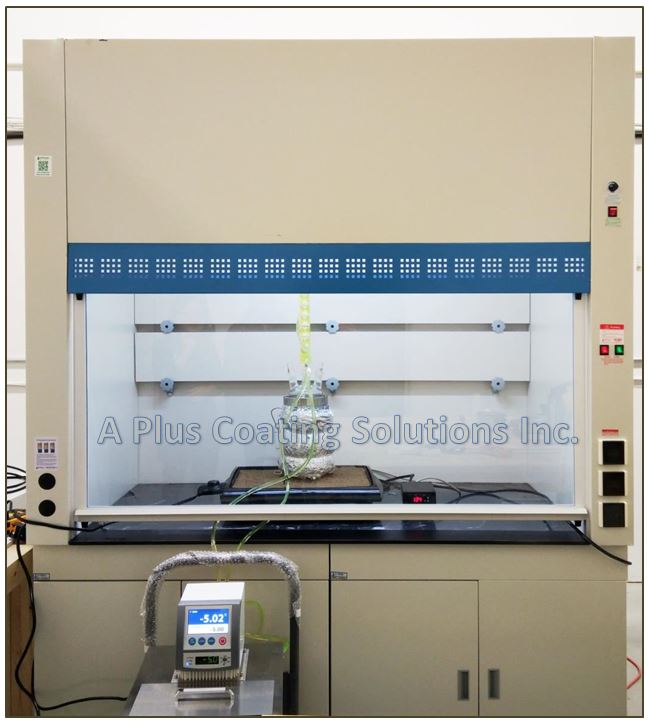Chemical resistance is the ability of coatings, and particularly the resins from which it is formulated, to resist breakdown by action of chemicals to which it is exposed. Chemical resistance testing on protective coatings is essential to gauge whether the coatings can withstand the intended chemical atmosphere and to determine the potential flaws of the coatings after chemical exposure, which will provide a common ground for crucial communication of performance properties between the coating manufacturer and end user of a coating. There are a variety of standard methods to determine the ability of coatings to resist chemical deterioration.
In A Plus Coating’s state of art testing facility, the chemical resistance test can be carried out by utilizing open and watch glass covered spot tests with reagent at ambient temperature, immersing the test coating samples in chemical reagents or spot, or using certain levels of sophisticated equipment if the test conditions also involve temperature and/or pressure (see our Autoclave test and Atlas Cell test).

Test methods for the Chemical Resistance test are available in:
- ASTM D1308 Standard Test Method for Effect of Household Chemicals on Clear and Pigmented Organic Finishes
- ASTM D543 Standard Practices for Evaluating the Resistance of Plastics to Chemical Reagents
- ASTM G20 Standard Practices for Chemical Resistance of Pipeline Coatings
- API RP 5L7 Recommended Practices for Unprimed Internal Fusion Bonded Epoxy Coating of Line Pipe (Appendix 12: Chemical resistance test)
- TM0174-2002 Laboratory Methods for the Evaluation of Protective Coatings and Lining Materials on Metallic Substrates in Immersion Service (Procedure B: Immersion test)
